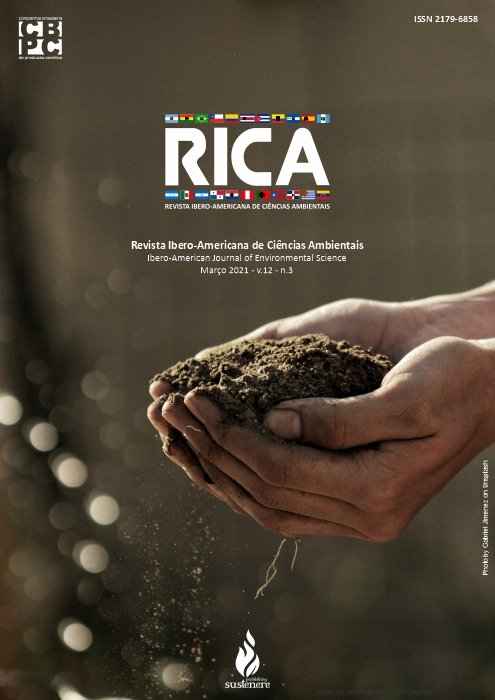Population dynamics of Protium Pallidum Cuatrec. in a selectively logged Terra-Firme Forest in the state of Pará, Brazil
DOI:
https://doi.org/10.6008/CBPC2179-6858.2021.003.0002Keywords:
Forest dynamics, Gaps, Entrance, Mortality and diameter growthAbstract
This study had as objective determines the influence of the directions and of the distances of the center of the gaps on the behavior of the entrance, mortality and diameter growth of individuals with DAP > 5cm of a population of White Pitch (Protium pallidum Cuatrec.), and determining the diameter distribution of that species for three years of studies in a primary forest after selective exploration . For so much, five portions of 10m x 10m were implanted in each strip, where they were appraised the variables: Entrance (I%), Mortality (M%) and the Annual Current Increment (ACI) in diameter. The data were analyzed through the analysis of variance of three factors (directions, distances and the period of three years). The species had an index of initial entrance of 16.6%, with null mortality in the 1st year, presenting the largest values of diameter growth in the directions North and South, showing tendency to the stabilization and diameter distribution usually found at natural forests, with larger number of individuals in the smallest size classes.
Downloads
Downloads
Published
Issue
Section
License
The CBPC - Companhia Brasileira de Produção Científica (Brazil CNPJ: 11.221.422/0001-03) the material rights of the published works. The rights relate to the publication of the work anywhere in the world, including rights to renewals, expansions and dissemination of the contribution, as well as other subsidiary rights. All electronically published works may subsequently be published in printed collections under the coordination of this company and / or its partners. The authors preserve the copyright, but are not allowed to publish the contribution in another medium, printed or digital, in Portuguese or in translation.









